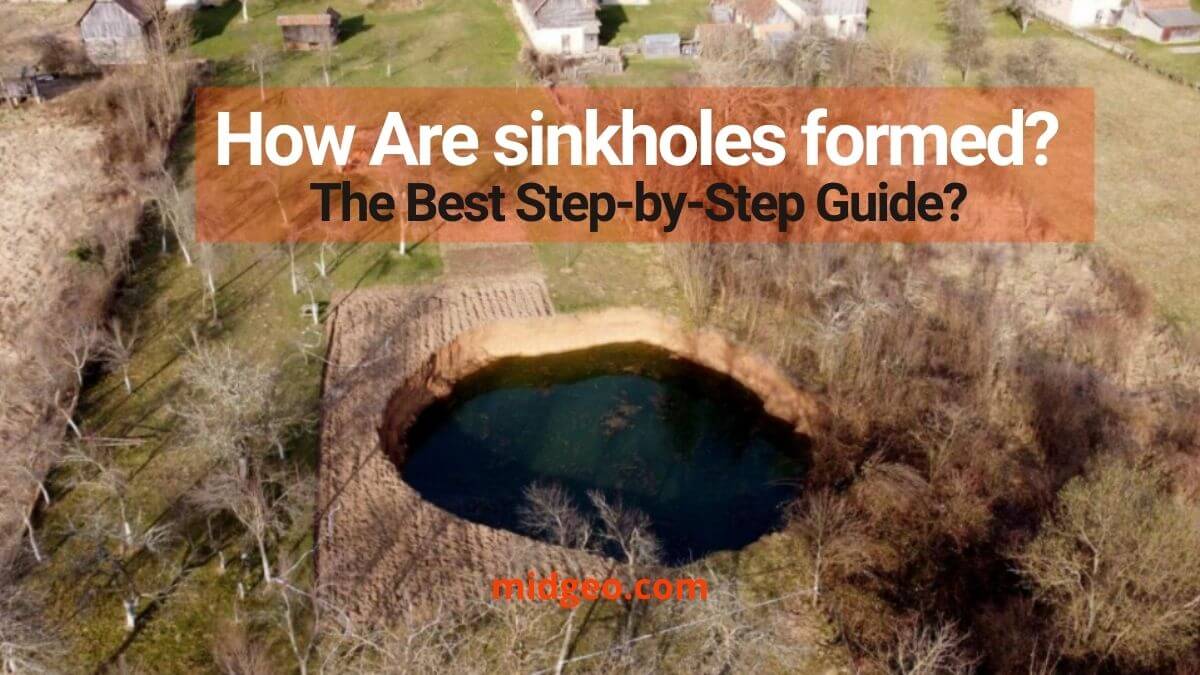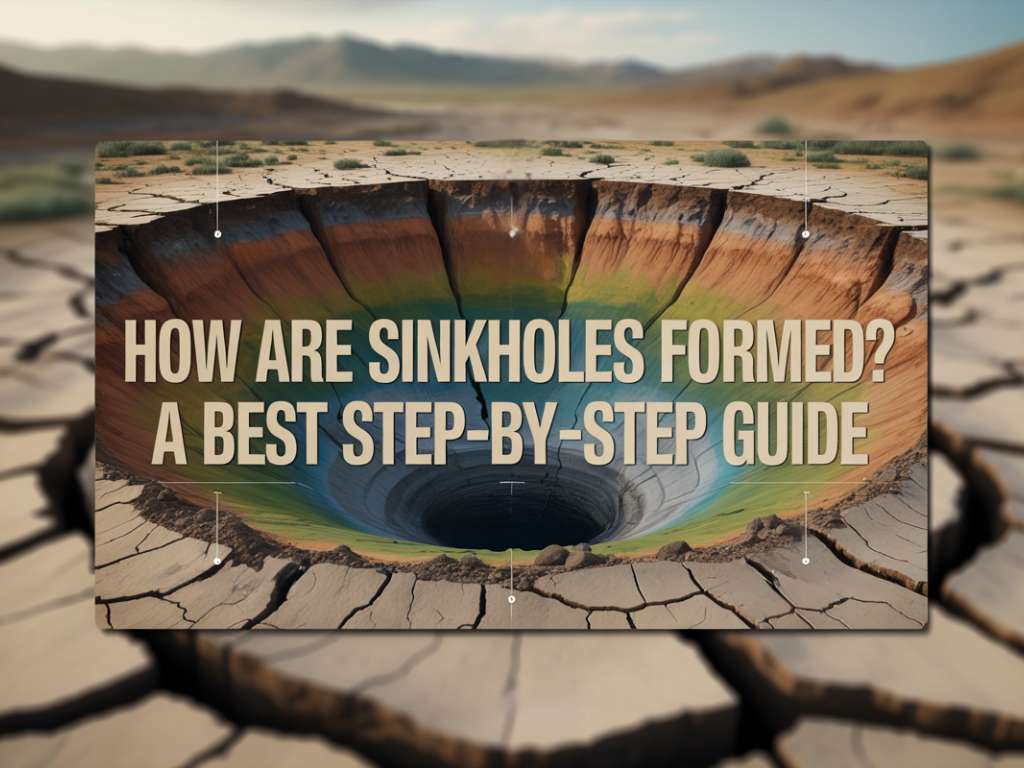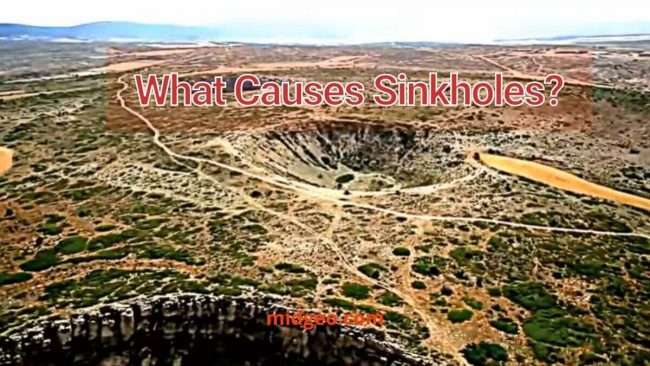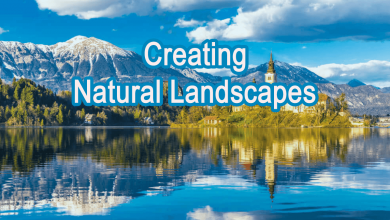
Many kinds of landforms may be found all around the world. The Sinkhole is the most important topic in today’s world. So, How are sinkholes formed? When we observe the sinkhole, which won’t form one are two days. Sinkholes could really happen for a variety of causes; keep reading to learn more.
Whenever the land surface above collapses or sinks into the holes. Drought, along with significant groundwater extraction, can create ideal circumstances for sinkhole formation. You’re undoubtedly wondering where where do sinkholes occur?
let me discuss, What are sinkholes? Types, and facts about the sinkhole.
To learn about Landform, I have a detailed guide on How Waterfalls Are Formed? Types of waterfalls In The World. Read Here.
What are sinkholes?
Sinkholes are commonly joked about as being when the Earth tried to eat mankind entirely, but it got me thinking about what sinkholes are and how they form.
A sinkhole is a decrease or big hole formed by the surface layer collapsing. Hydrological mechanisms are responsible for some of them.
Water stays inside the sinkhole and descends into the subsurface when it rains.
Sinkholes might be a few feet long or hundreds of acres long, and they can be a few feet deep or more than 100 feet deep. Some have vertical walls and are formed like shallow bowls or saucers; others store water and form natural ponds.
What are the 4 types of sinkholes?
- Solution sinkholes
- Cover-subsidence sinkholes
- Cover-collapse sinkholes
- Pseudokarst sinkhole
How are sinkholes formed

A number of natural sinkholes occur in places where vast amounts of carbonate rocks, such as limestone, exist. Groundwater moving through the subsurface can erode the rock over time, leaving cavities and open tunnels. In fact, most caves are produced in this manner.
The behavior of groundwater flow is completely affected by these tunnels and holes.
To begin with, these allow water to pass fast, because this would from a pipe, producing it even more erosive.
They also provide an area for land to wash away. Any soil above a dissolving feature that meets those two characteristics increases the chances of eroding away from inside, facts relating to a sinkhole. However, not all sinkholes are generated by natural processes.
In common belief, among the most well-known sinkholes in recent years have been produced by humans. A pipe can act like a cave dissolved into the bedrock and allow groundwater to take soil away, just as a cave dissolved into the bedrock can. And pipelines aren’t limited to geologically specific regions.
Since ancient times, local people have been aware of large and visually unique sinkholes. Sinkholes are now classified and named using site-specific or generic nomenclature.
- South France – Aven
- Bahams – Black holes ( dark color water ), Blue holes ( deep blue color visible)
- Cenotes – The Yucatán Peninsula, Belize and some other regions.
- Sótanos – Mexico
- Tiankengs ( sky holes ) – China
- Tomo – New Zealand
What Causes Sinkholes
Do you know, What causes sinkholes?
The answer Maybe water. Yes, water erosion.

Groundwater can destroy the underlying rock as it sinks just under the surface. This is especially true in locations with salt, limestone, or dolomite in the ground.
Because some experts believe the droughts will become more regular as a result of global warming, this could indicate that sinkholes could become more widespread as a result of our warming environment.
If the earth is choosing to eat us, climate change is definitely critical!
It’s frightening to think that the Earth would try to swallow you and your belongings, but there are clues that a sinkhole is about to appear.
Early indicators of a sinkhole include leaning fences or trees, as well as cracks emerging in structures above the sinkhole and even wilting plants.
- What is a Beach? How Are Beaches Formed?
- List of Landforms A to Z on Earth
- Which Land Feature Supports the Theory of Continental Drift?
Water is so powerful. Indeed.
Where Do Sinkholes Occur?
Now, let me know, where do sinkholes occur?
When Mother Earth is starved, she can become impatient. Sinkholes are most common in karst terrains, which are areas around the world where subterranean drainage has a massive impact on the landscape.
In addition to sinkholes, caverns, sinking streams, and springs are common phenomena in karst terrains around the world. When water collects in a region and isn’t drained out, sinkholes might occur.
Sand, clay, and other materials make up the soil’s upper layers. The bottom most layer, known as bedrock, is made up of rocks.
Sinkholes are particularly common in places with limestone or dolomite minerals with in bedrock layer.. Rain penetrates through the soil, eventually reaching the bedrock.
Water dissolves these rocks over time, causing them to erode and produce hollow chambers.
As these cavities become deeper, the roof of the space,that is the higher layers of earth, can no longer support the weight and collapse, resulting in sinkholes.
Keep an eye out for some of the signs, especially if you live in a sinkhole-prone location. I always want to make sure that my friends are protected!
What is Sinkholes? and Where and How are sinkholes formed?
What is the famous sinkholes?
The world’s deepest water filled sinkhole – the Zacatón cenote in Mexico. ( 1,112 ft )
The largest natural sinkhole is the vast Qattara in Egypt.
What causes sinkholes in Florida?
Most rainwater is slightly acidic, and as it passes through decaying plant material in Florida’s soil, it becomes more acidic. This acidic water plays an important role in the erosion of Florida’s limestone and dolomite. As a result of the chemical erosion, voids or cavities occur, and the underlying sediments fall into the voids, causing the sinkhole. Pasco, Hernando and Marion are example of well known sinkhole in Florida.
However
Sinkholes are getting more dangerous over time cause of human activity and natural disasters. If you have proper knowledge about sinkhole then can help to protect our earth. I hope now you have a clear idea about What is Sinkholes? and Where and How are sinkholes formed? If you have any quires about types of sinkhole, causes of sinkhole. Feel free comment in the description bellow. Thanks.





